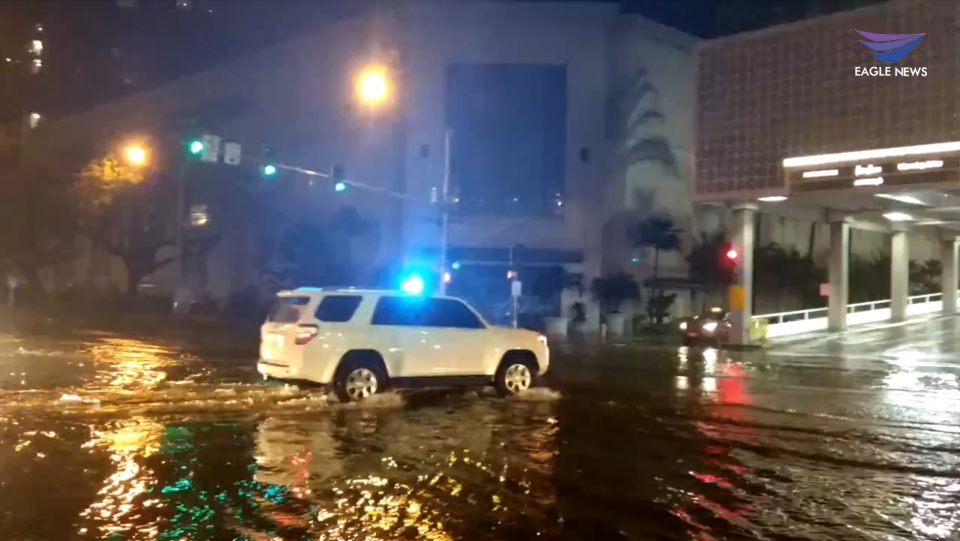By Alfred Acenas
Eagle News Service
HONOLULU (Eagle News) – According to a recent study by the United Nations Office for Disaster Risk Reduction and the World Meteorological Organization, roughly half of the world’s countries lack adequate hazard early warning systems.
Given this predicament, NASA recently partnered with the University of Hawaii’s (UH) Pacific Disaster Center (PDC) and other leading scientific institutions in releasing a significant breakthrough in flood prediction technology to help save lives and aid early responses to rising flood impacts worldwide.

The “Model of Models” (MoM) tool combines data from open-source hydrological models with Earth-observing satellite data to generate global flood-risk severity updates several times per day. This is the first time that comprehensive global flood early warnings have been available at the sub-watershed level.
“This new technology covers the face of the globe, enabling us to observe flood risk and anticipate the likelihood of floods in ways never before possible,” said Shanna N. McClain, disasters program manager for NASA’s Earth Science Applied Sciences Program. “The technology we have developed will be transformative, enabling early action by communities around the globe, especially small island communities and developing states that lack the necessary early warning information to protect themselves and their loved ones during flood events.”
NASA partnered to integrate the MoM into the PDC’s global multi-hazard alerting platform DisasterAWARE. When MoM detects a high likelihood of flooding in a region, DisasterAWARE sends a flood early warning notification to impacted communities, letting them quickly take the steps necessary to save lives and livelihoods.
Local authorities may use this information to activate emergency response plans, order evacuations, or deploy response teams and humanitarian relief.
“Until now, comprehensive global flood early warnings have not been possible, either due to limitations in hydrologic monitoring networks, forecast models, or expertise to operate and widely disseminate their results, especially in small and vulnerable countries,” PDC Deputy Executive Director Chris Chiesa described. “MoM will be a game changer.”
The International Federation of Red Cross currently integrates all of PDC’s DisasterAWARE early warning and risk information into its Go Platform, which provides its 192 national societies and more than 15 million volunteers with critical emergency needs information and the tools they need to provide adequate response.
UH President David Lassner stated, “The operational launch of this new model by the University of Hawaii’s Pacific Disaster Center and the NASA Disasters flood team is not only an impressive example of what people can do when they come together to solve hard problems, but also timely and paramount to the climate-change crisis issues at hand.”
The business community will soon also be able to access this new flood hazard information for supply chain and continuity of operations planning through DisasterAWARE Enterprise.
(Eagle News Service)
